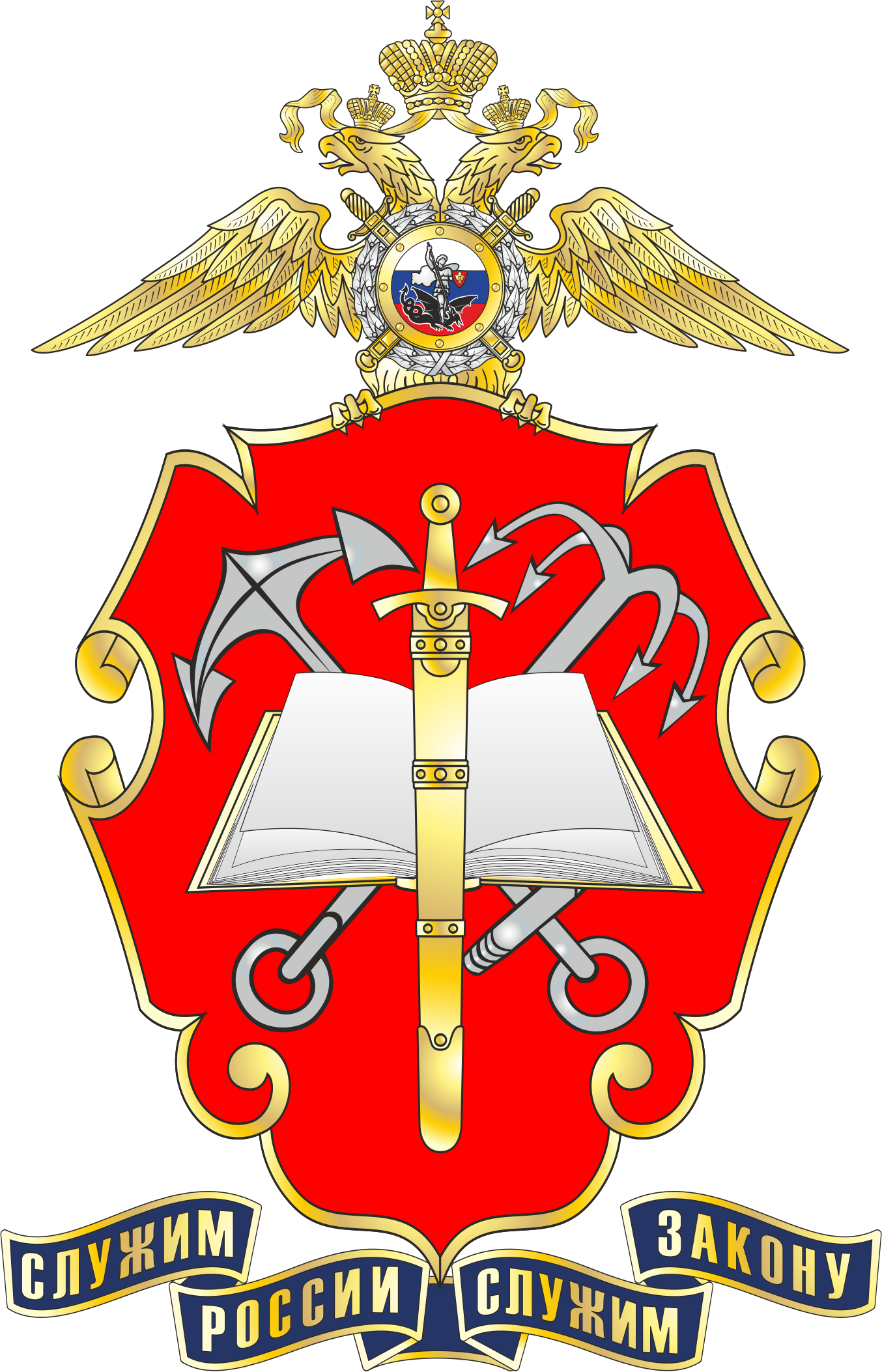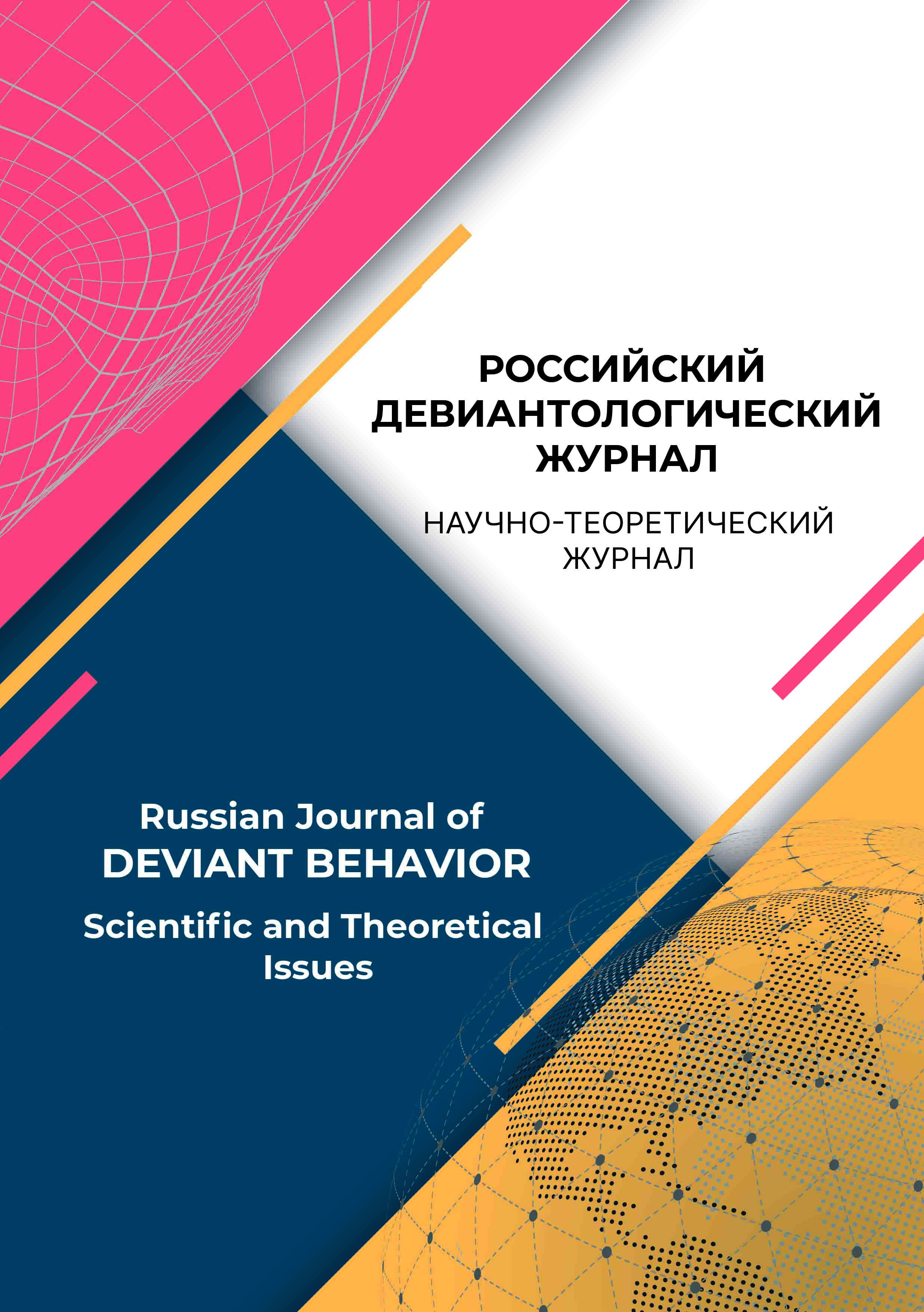Russian Federation
Russian Federation
The article discusses problem of coordination of subjects of preventive work with minors. The analysis shows the inefficiency of the subjects of prevention of delinquency among adolescents, including the low activity of the subjects themselves, the lack of real mechanisms of interaction, the lack of strategies to respond to actions of destructive groups on young people. The solution of the problem is seen in the development of practices of group interaction of subjects of prevention, allowing to form a complete and consistent image of the teenager in a difficult life situation. The absence of methods providing the decision of this problem became a starting point for carrying out research. The theory of conceptual metaphor became the methodological basis of the study. The empirical research is carried out by a method of group training. The technique of gathering of representations of subjects of prevention about deviant teenagers is used. Sample of this research included 70 employees of state and public organizations. Metaphorical models formed by the participants of the training in the process of making «maps of the world of deviant adolescents» were the empirical material. The result of the research was the testing of the method of constructing a metaphorical model. The possibilities and limitations of its use for identifying the causes and conditions of deviant behavior of adolescents were determined. The prospects of the research are further development of methods of coordination of interdepartmental interaction of subjects of prevention of deviant behavior of adolescents.
prevention of deviations, teenage deviancy, interaction of subjects of prevention, group training, perception of deviations
1. Arutyunova, N. D. (1990). Diskurs. V V. N. Yarceva (gl. red.), Lingvisticheskiy enciklopedicheskiy slovar' (str. 136-137). Moskva: Sovetskaya enciklopediya.
2. Bessonov, I. V. (2016). Social'no-psihologicheskie aspekty ispol'zovaniya metafory v upravlencheskih interakciyah. Azimut nauchnyh issledovaniy: pedagogika i psihologiya, 4 (17), 297-299.
3. Bol'shakova, L. S. (2008). Kognitivnyy mehanizm sozdaniya vizual'noy metafory (na materiale angloyazychnyh muzykal'nyh videoklipov). Sovremennye problemy nauki i obrazovaniya, 2, 119-123.
4. Budaev, E. V., Chudinov, A. P. (2008). Kognitivno-diskursivnyy analiz metafory v politicheskoy kommunikacii. Politicheskaya lingvistika, 26, 37-48.
5. Voroshilova, M. B. (2012). Kreolizovanaya metafora: pervye zarisovki. Politicheskaya lingvistika, 4, 94-99.
6. Galaguzova, Yu. N. (2019). Dobrovol'cheskaya deyatel'nost' podrostkov s delinkventnym povedeniem: trudnosti organizacii i vozmozhnosti realizacii. Social'naya pedagogika, 1, 49-57.
7. Garret, M. (2008). Obrazy organizacii (per. s angl. I. Matveeva, R. Samunenkov). Moskva: Mann, Ivanov i Ferber.
8. Dzyatkovskaya, E. N., Yakunina, I. N. (2018). Metaforicheskaya kartina mira kak faktor socializacii molodezhi. Cennosti i smysly, 6, 114-129.
9. Ivanova, A. A. (2018). Kriminologicheskaya profilaktika kak prioritetnaya zadacha yuvenal'noy yusticii. Vserossiyskiy kriminologicheskiy zhurnal, 4, 505-514.
10. Igolkina, K. P. (2014). Teoreticheskie aspekty socializacii lichnosti v issledovanii podrostkov-pravonarushiteley, otbyvayuschih nakazanie v vospitatel'noy kolonii. Vestnik Maykopskogo gosudarstvennogo tehnologicheskogo universiteta, 4, 116-121.
11. Katrechko, L. S. (2020). Pyat' principov postroeniya doveritel'nyh otnosheniy s trudnymi podrostkami. Issledovatel'/Researcher, 4 (32), 264-271.
12. Kolmogorova, A. V. (2012). Koncepcii i modeli kommunikacii v sovremennom gumanitarnom znanii. Vektory blagopoluchiya: ekonomika i socium, 1 (2), 272-277.
13. Korneeva, Ya. A., Arefina M. S. (2015). Vzaimosvyaz' predstavleniy o prichinah sovershennyh prestupleniy podrostkov i effektivnosti meropriyatiy po ih resocializacii na etape dosudebnogo soprovozhdeniya. Tavricheskiy nauchnyy obozrevatel', 2, 69-71.
14. Lisovskaya, I. V. (2021). Perevospitat' nel'zya nakazyvat'? Kak konstruiruyutsya scenarii reintegracii i resocializacii «trudnyh» podrostkov. Monitoring obschestvennogo mneniya: ekonomicheskie i social'nye peremeny, 2, 383-402. https://doi.org/10.14515/monitoring.2021.2.599
15. Nikolaev, V. A., Grineva, E. A., Olevskaya, I. A. (2019). Metodika vospitaniya detskogo kollektiva v opyte A. S. Makarenko kak sredstvo profilaktiki otkloneniy v povedenii podrostkov. Social'naya pedagogika, 1, 62-65.
16. Novoselova, A. S., Kosolapova, L. A. (2013). Vzaimodeystvie ubezhdeniya i vnusheniya v processe socializacii i resocializacii podrostkov i molodezhi. Vestnik PGGPU. Seriya № 1. Psihologicheskie i pedagogicheskie nauki, 2, 5-18.
17. Rean, A. A., Konovalov, I. A., Kuz'min, R. G. (2021). Analiz luchshih praktik podderzhki sem'i i detstva v sovremennoy Rossii: problema dokazannoy effektivnosti. Pedagogika, 4(85), 47-59.
18. Suhova, E. I. (2009). Resocializaciya podrostkov v usloviyah social'nogo prostranstva (istoricheskiy aspekt). Vestnik Nizhnevartovskogo gosudarstvennogo universiteta, 3, 40-52.
19. Fahrutdinova, G. G. (2017). Vzaimodeystvie sub'ektov profilaktiki po vyyavleniyu i preduprezhdeniyu pravonarusheniy nesovershennoletnih na ranney stadii. Pravo i praktika, 3, 72-76.
20. Chernyaeva, T. I. (2020). Temnye storony organizacionnoy zhizni: vozmozhnosti risunochnyh metodik. Interakciya. Interv'yu. Interpretaciya, 12(1), 39-64. https://doi.org/10.19181/inter.2020.21.3
21. Chudinov, A. P. (2003). Metaforicheskaya mozaika v sovremennoy politicheskoy kommunikacii: monografiya. Ural'skiy gosudarstvennyy pedagogicheskiy universitet.
22. Yakovleva, M. A. (2018). Vzaimodeystvie organov vnutrennih del s drugimi sub'ektami profilaktiki prestupnosti. Vestnik Sankt-Peterburgskogo universiteta MVD Rossii, 3(79), 139-143.
23. Brezina, T., Azimi, A. M. (2018). Social Support, Loyalty to Delinquent Peers, and Offending: An Elaboration and Test of the Differential Social Support Hypothesis. Deviant Behavior, 39(5), 648-663. https://doi.org/10.1080/01639625.2017.1286190
24. Esposito, G., Ribeiro, A. P., Alves D., Gonçalves M. M., & Freda F. M. (2017). Meaning Construction in Group Counseling: The Development of Innovative Moments. Journal of Constructivist Psychology, 30(4), 404-426. https://doi.org/10.1080/10720537.2016.1238789
25. Fagan, A. A. (2021). Developmental Prevention Programs Intended to Change Peer Risk and Protective Factors: a Review of the Evaluation Literature. Journal of Developmental and Life-Course Criminology, 7, 87-111. doi:https://doi.org/10.1007/s40865-020-00138-4
26. Gottfredson, M. R. (2018). General Theory and Global Criminology: Childhood Environments, Problem Behaviors, and a Focus on Prevention. Asian Journal of Criminology, 13, 347-365. doi:https://doi.org/10.1007/s11417-018-9275-z
27. Rogers, M., Rumley, T., & Lovatt, G. (2019). The Change Up Project: Using Social Norming Theory with Young People to Address Domestic Abuse and Promote Healthy Relationships. Journal of Family Violence, 34, 507-519. doi:https://doi.org/10.1007/s10896-018-0026-9
28. Udris, R. (2017). Psychological and Social Factors as Predictors of Online and Offline Deviant Behavior among Japanese Adolescents. Deviant Behavior, 38 (7), 792-809. https://doi.org/10.1080/01639625.2016.1197689
29. Walker, D’. A., Holtfreter, K. (2021). Teen Pregnancy, Depression, and Substance Abuse: The Conditioning Effect of Deviant Peers. Deviant Behavior, 42 (3), 297-312. https://doi.org/10.1080/01639625.2019.1666610














